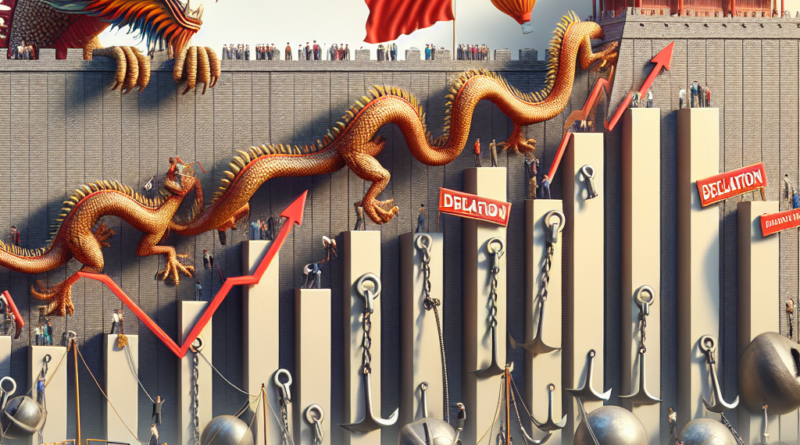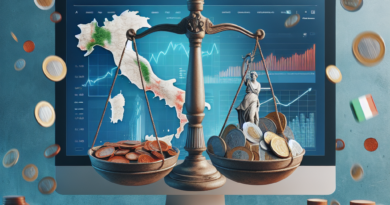China Faces Deflation Threat: What’s Happening to the Dragon?
“`html
China in the Spotlight as Latest Price Data Confirms the Dragon’s Crisis
Recent statistics have brought China into the global spotlight again, as the country’s core inflation has cooled down to its lowest level in three years.
This scenario is intensifying calls for enhanced measures to boost household spending.
Weak demand is indeed jeopardizing the annual growth target, risking the Asian powerhouse becoming ensnared in a deflationary trap.
Disappointing consumer and producer price data have had a notable impact on the CSI 300 index, which extended its initial losses and ended the morning session down by 1.1%.
The onshore benchmark is poised to hit a five-year low, reflecting bearish sentiment amid a deficiency in corporate profits and economic recovery.
Is China Heading Towards Deflation? Current Events and Ongoing Disillusionment
According to the National Bureau of Statistics, the Consumer Price Index (CPI) in China, excluding the volatile costs of food and energy, rose by merely 0.3% in August year-on-year, marking the lowest rate since March 2021.
Meanwhile, the broader CPI increased by 0.6%, falling short of expectations, despite being supported by higher food costs due to last month’s adverse weather.
These figures further illustrate the weak demand among consumers within the world’s second-largest economy, prompting renewed calls for actions to prevent a negative cycle of declining revenues, wages, and corporate spending.
The Impact of Deflationary Pressures
“Deflationary pressures in China are becoming increasingly entrenched,” asserted Michelle Lam, economist for Greater China at Societe Generale.
“This could spiral into a prices-wages downward cycle, necessitating a robust political response.”
According to the GDP deflator, an indicator considering prices across the economy, China is experiencing the longest streak of price declines since 1999.
Weak demand for consumption and investment has incited fierce “price wars” in sectors like electric vehicles and solar energy.
This situation undermines China’s goal of achieving approximately 5% growth, as consumers postpone purchases and companies reduce salaries.
Official data reveals that vehicle prices have dropped by 5.5%, with communication devices seeing a 2.1% decline.
Factory gate prices continue to stagnate in deflation, a trend that has persisted since late 2022, with production inflation down 1.8% year-on-year—more than economists’ forecasts of a 1.5% drop.
Last week, former central bank governor Yi Gang urged policymakers to focus on combating deflationary pressures immediately.
This call marks a rare acknowledgment by a prominent Chinese figure of the nation’s struggle with falling prices.
Global Implications of China’s Deflation Crisis
The issue of deflation in China transcends national economic relevance, extending global implications, which is why macro data from the dragon is meticulously monitored.
Typically, excess production capacity in a slowing economy—China in this case—will push Chinese exporters to cut prices on goods sold abroad.
In a context of trade hostility, this could exacerbate Western nations’ aversion to what they perceive as unfair Chinese competition.
“`




